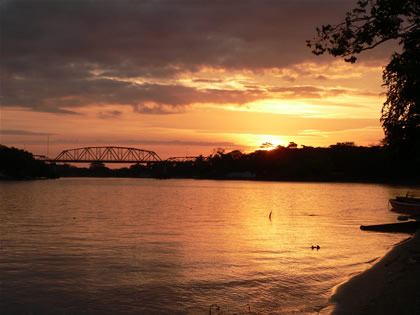Country Area 23,818 km2 Capital Governor Radical Change | Region Orinoquia Region Founded July 4, 1991 | |
 | ||
Map of Arauca Department
Arauca Department (Spanish: Departamento de Arauca, [aˈɾawka]) is a department of Colombia located in the extreme north of the Orinoco Basin of Colombia (the Llanos Orientales), bordering Venezuela. The southern boundary of Arauca is formed by the Casanare and Meta Rivers, separating Arauca from the departments of Casanare and Vichada. To the west, Arauca borders the department of Boyacá. The Caño Limón oil fields located within Arauca account for almost a third of the Colombian oil output. Its capital is the town of Arauca.
Contents
- Map of Arauca Department
- Etymology
- History
- Political and administrative evolution
- Geography
- Ethnography
- Indigenous population
- Economy
- Municipalities
- References

Etymology

It is unclear whether or not the name "Arauca" is connected with the "Araucanian" or Mapuche Indians of Chile and Argentina, unless one tracks the thousand-year old migratory patterns of indigenous Andean peoples in South America.
History
The first conquistador who discovered the region of present-day Arauca was Nikolaus Federmann in 1539. He was first a soldier in the company of Georg von Speyer, who passed through the south of present Venezuela and the eastern part of what is today known as Colombia. In 1659, the catholic missions were establishing new settlements in tribal Guahibo, U'wa, Aeric and Chirico tribal lands.
In the eighteenth century, being expelled from the Jesuits under Viceroy Pedro Mesia de la Zerda, the Augustinian Recollect succeeded in their mission of evangelization. They founded five centers of the catechism: Solitude of Cravo, Cuiloto San Javier, San Jose del Ele, Lipa San Joaquin and San Fernando de Arauca.
In 1810, the Araucanian territory became part of the newly created province of Casanare and in 1819 Arauca was incorporated into the province of Cundinamarca. By 1857, Arauca was made part of the Sovereign State of Boyacá, that later became the Boyacá department. In 1891, the Arauca police station was established with chief executive Pedro León Acosta. By decree 113 of January 20, 1955, the territory was elevated to the national quartermaster, and finally, with the Constitution of July 5, 1991, Arauca became a department. Arauca is the regional capital since 1911.
Political and administrative evolution
Geography
Its territory covers an area of 23,818 km2, predominantly composed of plains.
Ethnography
The Colombian census does not collect data on race and ethnicity, but compiled population estimates of the five groupings are:
There are small numbers of descendants of European immigrants: the Spanish, German, Portuguese, Italian, French, British, Dutch, Polish, Greek and Arab (i.e. Lebanese, Syrian and Palestinian) nationalities.
Many Venezuelan-born nationals live in the department; around 10-15 percent of the population is of Venezuelan origin.
Indigenous population
The department's total indigenous population amounts to 3591 people. Across the department 26 resguardos are located in an area of 128,167 hectares (316,710 acres). Six indigenous groups populate this region; U'wa with 1,124 members; Betoye at 800, Sikuani number 782, 441 Hitnü are registered, Kuiba count up to 241, Hitanü are listed at 110, the Chiricoa amount to 63 and thirty Piapoco are registered in Arauca. The predominant ethnic group in the department are the U'wa. They are located in the northeastern foothills of the Eastern Ranges of the Colombian Andes, until the Sierra Nevada del Cocuy in Boyacá. Its total population is estimated at 7231 people, belong to the Chibcha language family. U'wa means "intelligent people who can speak".
The Betoye with 800 members constitutes the second-largest ethnic group in the department. They inhabit the banks of the Cravo River and the municipality of Tame. The area of its territory is 702 hectares (1,730 acres). Their language is considered part of the Chibcha language family. Although not retaining their original language, the people speak a mixture of Betoye with Spanish. Certain grammatical structures of the Betoye language persist in this mixture.
The Guahibo are subdivided into tribes known as Sikuani, Kuiba, Chiricoa, Hitanü (iguana) and Hitnü (Macaguane), who speak Arawakan languages.
Economy
The main economical activity of Arauca is centered around the oil industry, with the Caño Limón oilfields as the most important source. The soils of the region have shown good conditions for growing cacao, bananas, cassava, rice, corn and fruit trees, as well as industrial crops such as African palmtree, sorghum, soybeans and sesame. Livestock farming is another important factor of the department's economy.
Municipalities
Arauca department consists of seven municipalities.
